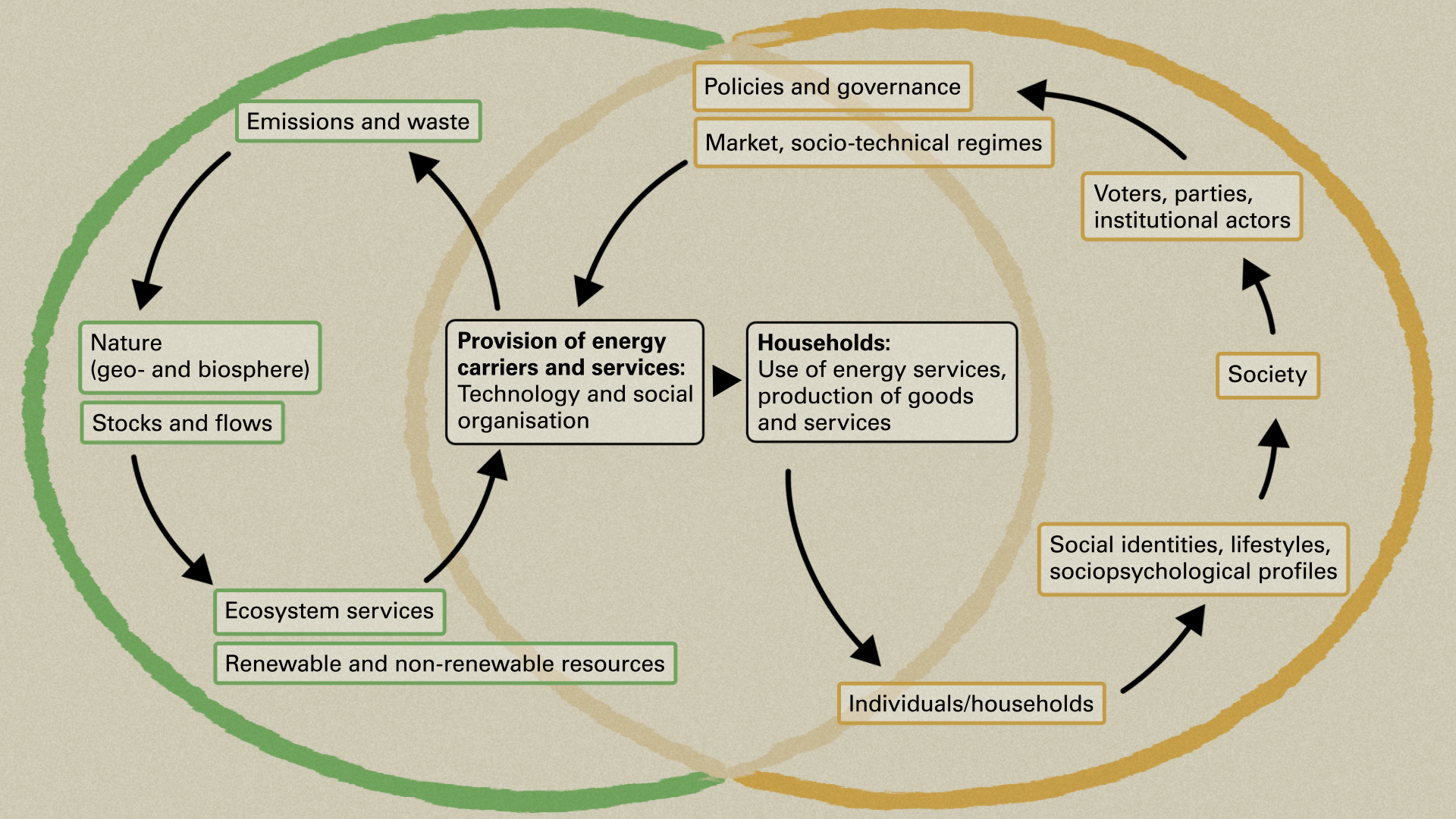ASSESSING SUSTAINABILITY: WORKING ON THE SWISS SCENARIO
4.1
Paving the way for a sustainability-oriented energy system
The energy system encompasses more than just energy supply and demand. It can be represented as a coupled human-nature system.
As discussed earlier, criteria for sustainable development should cover the different dimensions of the coupled human-nature system in question. In order to outline criteria for a desirable energy system in the future, we should start describing the essential elements of the coupled human-nature system of energy. This system is shown in the following diagram.
 Diagram: The generic coupled human-nature system applied to the energy provision/demand system. © Author’s own design; adapted by the New Media Center.
Diagram: The generic coupled human-nature system applied to the energy provision/demand system. © Author’s own design; adapted by the New Media Center.
The basic layout of the system remains the same as before. On the left is the sphere of the natural system, on the right the sphere of the social system. Both overlap in the middle, where energy carriers and services are provided.
From the perspective of the social system, the natural system provides stocks and flows of renewable and non-renewable energy sources to enable energy goods and services. It also provides ecosystem services such as landscapes or riverbeds. The use of these services leads to emissions and waste, which in turn affect the state of the natural system.
The provision of energy carriers and services can have many facets. For example:
- an engine and fuel to run it
- a service like a heating system, plus a specific carrier such as district heating or a heat pump that requires electricity.
In addition, energy carriers can be provisioned based on different resources like gas, coal, wind, or sun for electricity. Finally, the different systems are based on different forms of social organisation. Nuclear power plants require a centralised organisational scheme compared to a renewable energy electricity system that involves many different actors, including individuals as prosumers.
The societal sphere includes individuals as consumers of energy services on the one hand, and institutional actors on the other hand. Examples of institutional actors are political parties, policy makers, NGOs and business organisations, but also individuals as political actors. Policies and markets represent the societal potential for action and reaction to adapt, improve and correct by influencing the provision of energy sources and services.
Furthermore, social identities, lifestyles and socio-psychological profiles are components of the social system. They can of course change just as much as the other components of the coupled system. In contrast to the latter, however, these changes, in an open society, are not easily and directly targeted by means of policy instruments.
Author: Paul Burger
